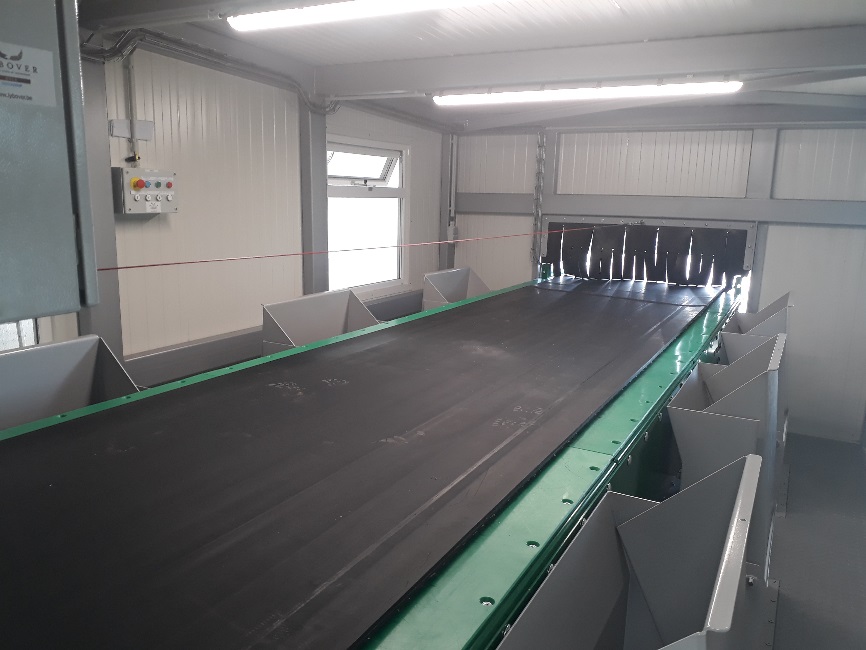Lybover BULK builds a manual sorting cabin with infeed hopper as part of a separation line to remove ferrous and non-ferrous from fluidised bed bottom ash. The client is located in Sweden and handles the processing and recycling of household and industrial waste. The manual sorting line aims to remove the remaining non-ferrous from the residual fraction >40mm. The ferrous materials have already been removed by an overband magnet. Specifically, the customer wants to sort out the aluminium, copper and stainless steel.
Manual and adjustable sorting line ensures flexibility
The manual sorting line is a stand-alone unit consisting of an infeed hopper, extraction belt and a sorting conveyor in a cabin. The total footprint of the installation is 3.5 m x 27.5 m. The free height under the cabin is 2.1 m. The maximum capacity of the total installation is 40 m³/h and is adjustable from 9.8 m³/h. This corresponds to approximately 45 t/h. The feed hopper is loaded with a wheel loader or telehandler. The intake height is 2.650 mm and the intake width is 3.900 mm. The hopper capacity is 7.5 m³. The hopper is equipped with raised walls above the pouring level to limit spillage. The hopper’s easily adjustable control slider determines the layer thickness. The slide is robustly designed and equipped with a hinged mechanism that prevents the hopper from blocking. When a large quantity (up to a maximum of 300 mm) passes, the slide opens.
Spill-proof sorting conveyor for maximum efficiency
The product is transported by the extraction conveyor to the sorting cabin. The extraction conveyor is equipped with an impact zone with impact bars, a rotation controller and a head scraper. The screening is carried out with wire mesh to facilitate visual inspection. The overflow point to the sorting conveyor is spill-proof. The overflow is designed so that the material falls open on the sorting line due to the throw and the higher speed of the sorting belt. The sorting conveyor runs through a cabin. The belt width is 1,200 mm and the six drop-out channels are designed for a maximum of eight operator positions. At the bottom of the ejection channels, a flap is provided to the outside to reduce draught and heat loss. The valve opens gravitationally when there is enough material on it or can be operated by a foot pedal.

Sorting plant tailored to Swedish weather conditions
The sorting installation was tailor-made for harsh weather conditions. The sorting conveyor belt consists of plastic slats on which the belt slides in order to prevent the belt from freezing. The cabin is well insulated with 150 mm insulation in the roof and floor and 80 mm in the side walls. The cabin has two half-glass doors and four large tipping windows, allowing plenty of natural light to enter. This, together with the lighting, ensures a well-lit sorting area. The cabin is fully air-conditioned with an HVAC unit to provide optimum working conditions. The control is fully integrated in the cabin. The control panel is located close to the operator. The speed of the feeder belt and the sorting line can be adjusted separately. This provides a fine-tuning of the desired layer thickness for sorting. The better the material is open, the easier sorting becomes and the better the ergonomics.